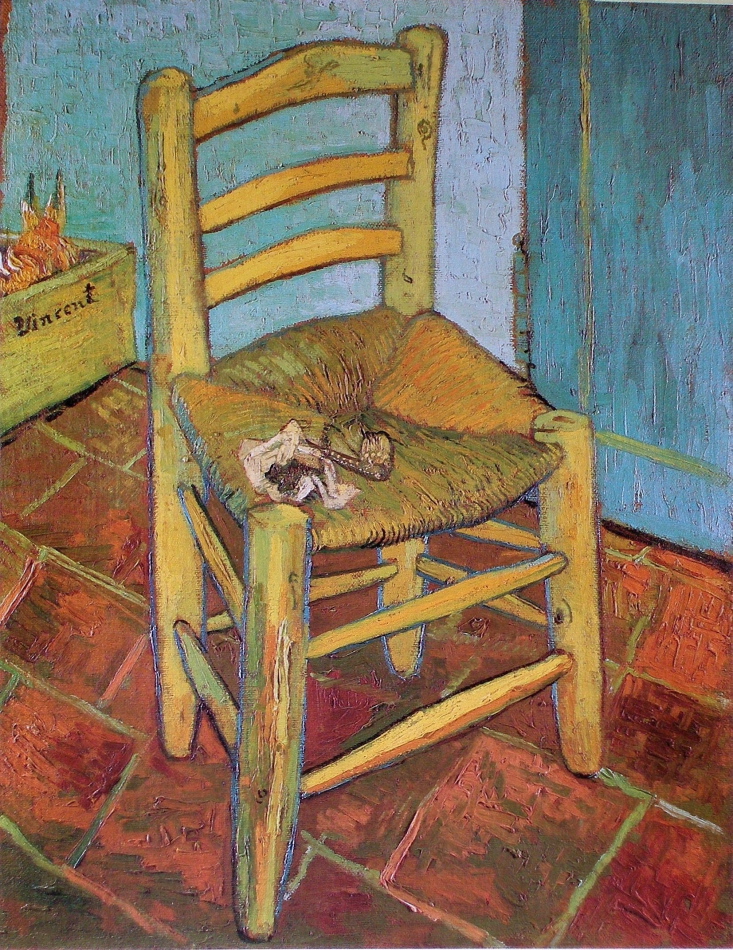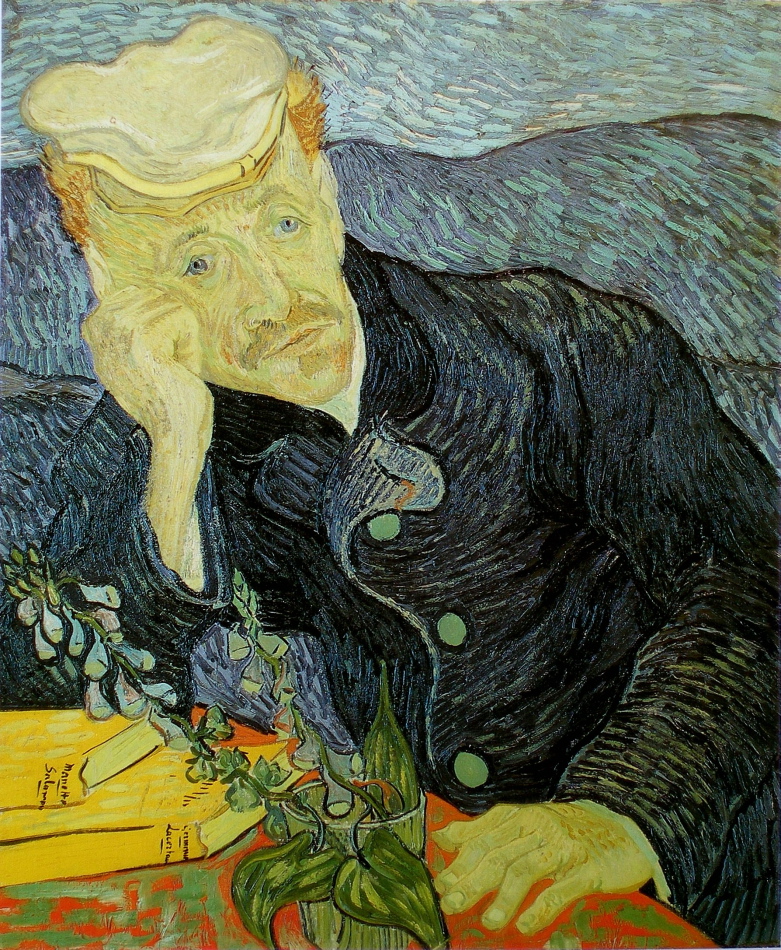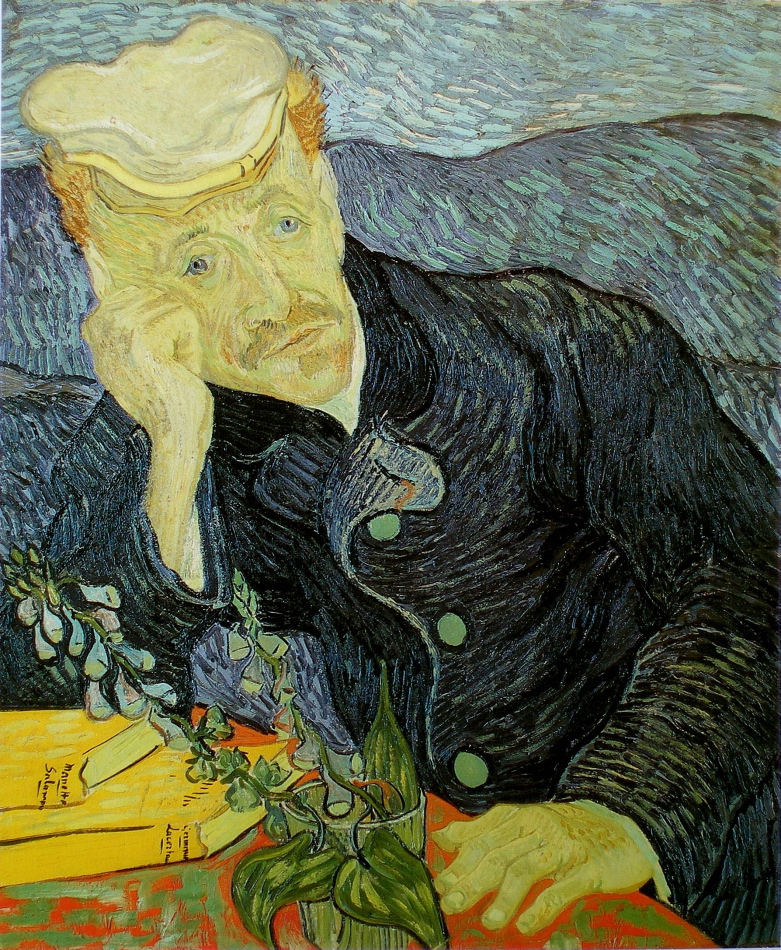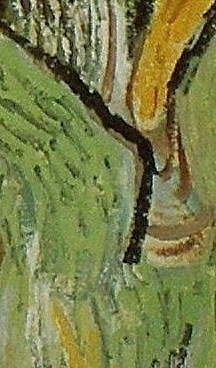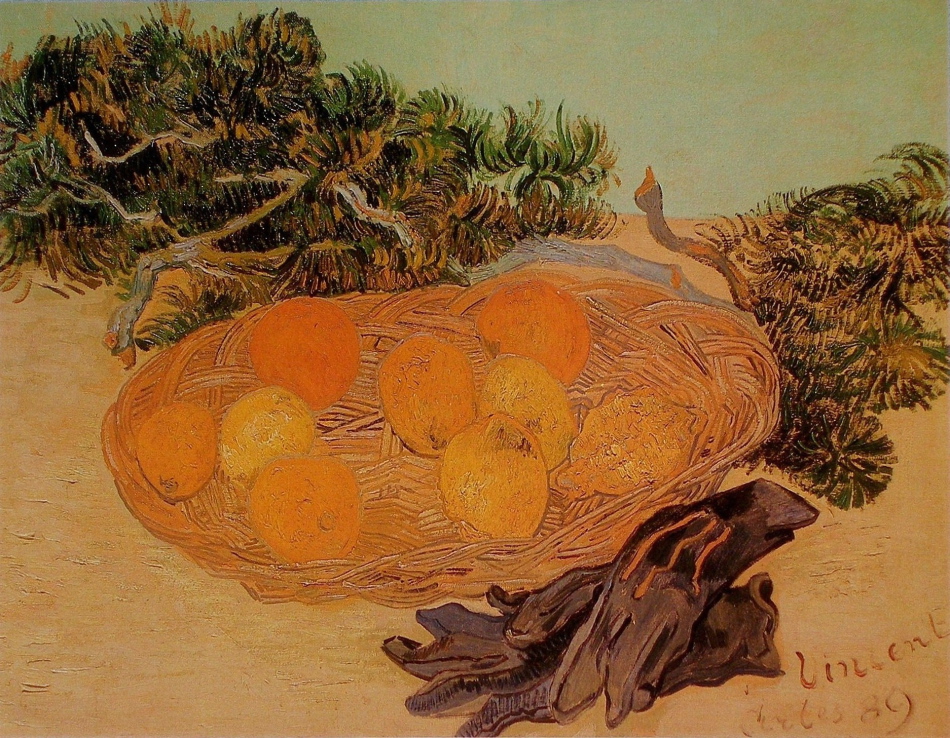
Vincent Van Gogh - Still Life of Oranges and Lemons with Blue Gloves - 1889 - 48 x 62 cm -oil on canvas
One of the primary considerations in composition is shapes, and the awareness of not disrupting the shapes with detail and modelling. This can be quite elusive as most painters want to convey their attention to detail, which unfortunately can muddle the foundation of a composition. And when artists put information before harmony and rhythm, they may sense disappointment with the results. Van Gogh has shown us how beautifully this can be avoided in this wonderful still life.
The composition is comprised of four “oval” shapes on two flat horizontal shapes. He did not clutter the foreground and background with superfluous detail.
How Van Gogh harmonized the fruit with the shape of the basket is masterfully painted. If you blur your eyes you can feel the shape! He was also very careful with the darker shapes as well, not only with their shapes, but also with very sophisticated integration.
We see this with the branch connecting with the left of the basket, the finger of the glove, and branches at the right. Note how the branch at the right pointing upword integrates with the dark oval at the top left, and how the gloves connect to the the one at the right. Your eye follows the top glove then rhythmically connects to the bottom of the branch at the right.
There is an integrating rhythm in this painting that always excites me for it’s sophistication. The three stripes on the glove not only integrate with the basket with colour but also with a beautiful note in the basket, the small dark lines connecting an orange and a lemon. (see detail)
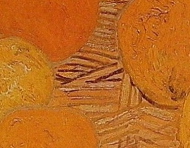
This is very sophisticated! And there is more for you to discover. Enjoy!

